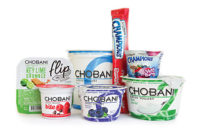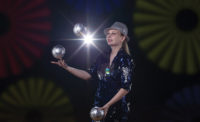
In my history with this column, I have written about traditional fermented dairy topics like yogurts, sour cream, kefirs, and the ingredients they use. It may be a little early for happy hour where you are, but we are going to step out of the dairy plant and step into the breweries, wineries, and distilleries that use dairy in the manufacture of alcoholic beverages. Hopefully, you will discover that your favorite aperitif has a version available in the market that uses dairy ingredients as a component of its manufacture.
New products
Just to give you an idea about how many alcohol products use dairy ingredients, an Innova Market Insights search of new product launches during the last five years shows 931 products globally. The United Kingdom led the way with 220 new products followed by the United States with 75, Canada: 64, China: 55, Japan: 44, and Italy: 40. Nine other countries launched the remaining products.
Most of the product launches were beers (628), followed by liqueurs (127), flavored alcoholic beverages (117), wine (16), fortified and other wines (13), other spirits (13), vodka (4), whiskey (3), dark rum (2), and cider (1). The wide variety of dairy ingredients used in these products might be surprising to you.
Using co-products
Many of you know that the manufacture of dairy protein ingredients like milk and whey protein concentrates and isolates also yields a co-product called permeate. If it comes from whey protein manufacture, it is called whey permeate, while milk permeate results from the manufacture of milk proteins. Permeates consist of about 94% water, 5% lactose, <.1% protein and the rest are vitamins and minerals.
Some manufacturers of permeate spray dry and sell it as an ingredient that is used for human food and/or animal feed. Other companies will manufacture lactose (milk sugar) from their permeate and sell that as an ingredient. Though there has been a lot of time spent on upcycling these co-products by developing food applications for permeate and lactose, we always seem to have more than we need for domestic and international use.
Having an excess of an ingredient also typically means that the price is low. Lactose is a great source of sugar, once it is hydrolyzed, to use for alcohol fermentation, and it also happens to be the dairy ingredient with the most new product launches at 599. One of the most common alcoholic products that uses lactose is a beer called Milk Stout, but you will also find it in beers that have names like milkshake, imperial cream, ice cream IPA, or Milk Beer from China. Lactose also shows up as an ingredient in other beers like hazys, porters, coffee stouts and more. The addition of lactic acid bacteria in a beer containing lactose helps to give the characteristic flavors of sours. Some other alcoholic beverages using lactose include rice wine from Korea.
Upcycled whey is the starting point for a new distilled spirit product called Wheyward Spirit, based out of Oregon. Because there are defined standards in the U.S. for types of distilled spirits, this brand has created two specialty spirit products that are 40% alcohol and 80 proof. Using terms like Wheysky to name one of the products that is similar to whiskey and aged in barrels, then taking the “best elements of vodka, sake, gin, and rum” to describe the versatility and sippability of their other spirit product, this company has ventured into the specialty spirits category, reminiscent of specialty cheese.
Another unique beverage called Norwhey uses upcycled Greek yogurt acid whey. Norwhey is a product developed by a faculty member at Cornell University. It just so happens that the state of New York has a lot of extra Greek yogurt acid whey, so they shouldn’t run out. “Norwhey is inspired by Nordic recipes that sustainably ferment whey from Skyr — strained yogurt — into a sparkling tonic filled with electrolytes and vitamins.” It is a hard seltzer that comes in flavors like Mountain Berry, Solar Citrus, and Glacial Ginger. Sounds like a refreshing drink for the hot days we have all been dealing with this summer.
Adding milk and cream
Milk, cream, and milk powders (skim and whole milk powder, caseinate) had the greatest number of new product launches after lactose, and their biggest category is liqueurs. Often called cream liqueurs, the dairy ingredients are added to the alcohol after the fermentation process.
Liqueurs are usually very creamy, smooth, and sweet with the milk ingredients providing the characteristic milky flavor and creamy mouthfeel. Globally, the flavors range from Kichi mango cheese from China, Piña colada from Argentina, Pistachio or Lemon cream liqueur in Italy, to a traditional Irish Cream from the UK and Caramel Cream from the U.S. Because of their sweetness and indulgent properties, cream liqueurs are often used like dessert as an after-dinner drink or mixed with coffee.
Now that you have heard about many different alcoholic beverages that are using dairy ingredients in unique ways, I encourage you to go out and try some of them! A toast to all of you for supporting beverage companies that are upcycling and bringing all the best attributes of dairy to one’s favorite aperitif.




